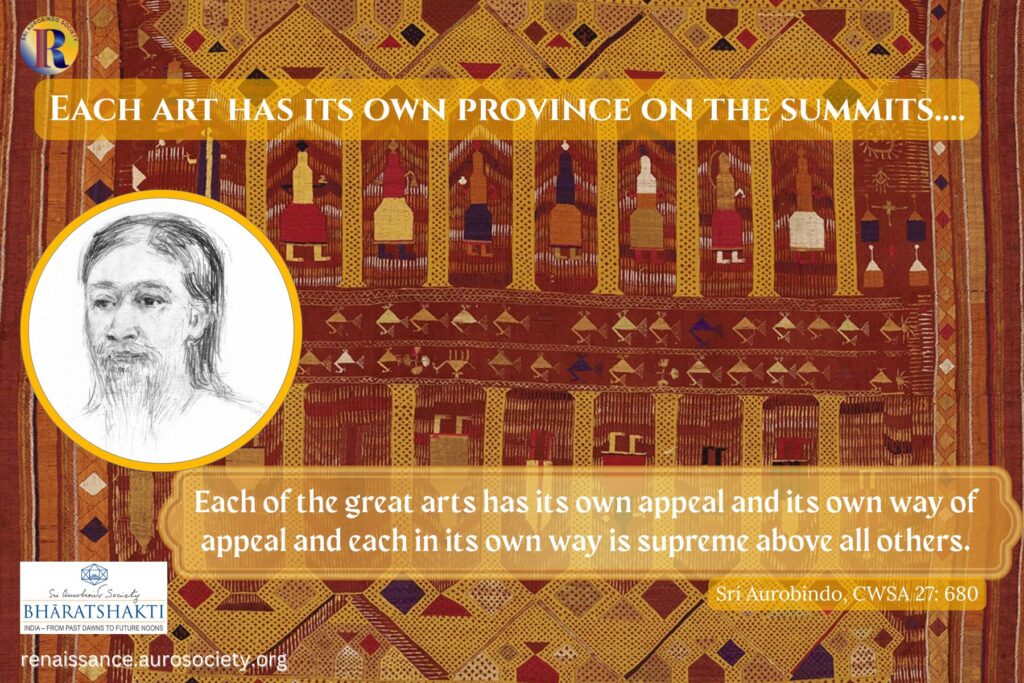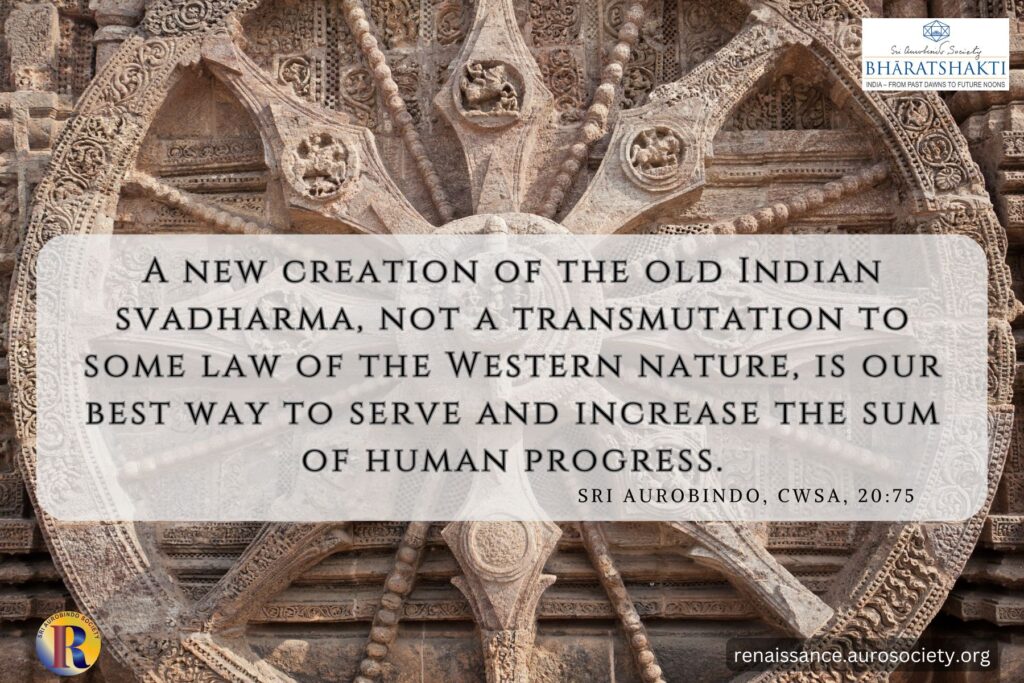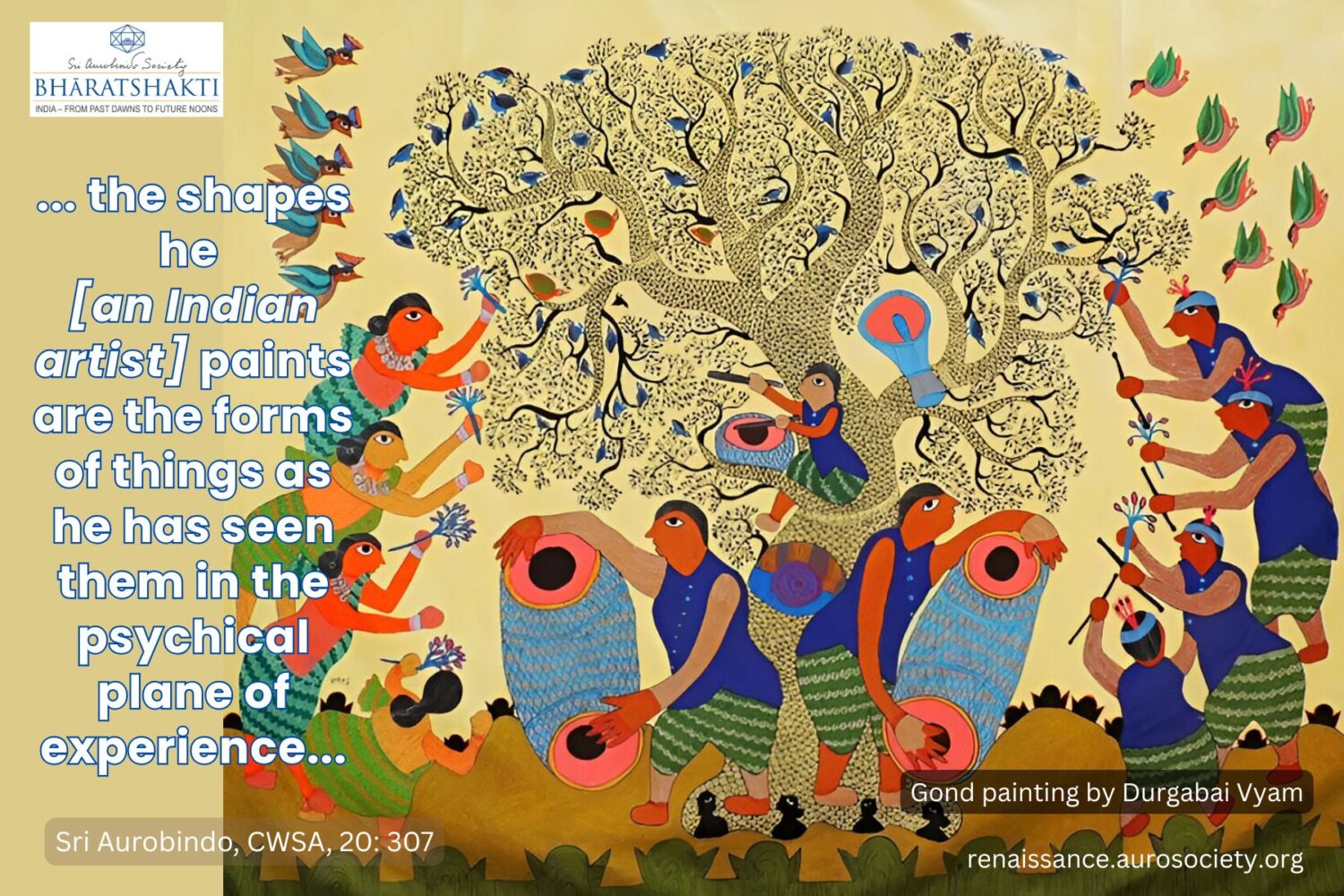The future belongs to the young. It is a young and new world which is now under process of development and it is the young who must create it. But it is also a world of truth, courage, justice, lofty aspiration and straightforward fulfilment which we seek to create. For the coward, for the self-seeker, for the talker who goes forward at the beginning and afterwards leaves his fellows in the lurch there is no place in the future of this movement.
A brave, frank, clean-hearted, courageous and aspiring youth is the only foundation on which the future nation can be built…
~ Sri Aurobindo, CWSA, Vol. 8, p.168
Sri Aurobindo wrote this in August 1909. It was published in Karmayogin on the significant date of 7th August, the date which according to Sri Aurobindo, marked the birthday of Indian Nationalism. That was in the heyday of Indian freedom struggle.
But the message is just as relevant today as it was back then.
India today is politically free. But is she also on her way to rediscover her unique temperament, her true role and mission? Are we as a people working toward a true Indian renaissance that is grounded in India’s eternal spirit and truths?
India is a civilizational nation and to see and know India only from the vantage point of a modern nation-state is to see and know only the outer surface. Today, as India goes through a deeply significant transition in the process of her rediscovery of her own way, a deeper way of being, it is critical that Indians must know India from a deeper vantage point.
***

India’s renaissance is significant not only for her future but the future of the world. It is India alone which can show the humanity a path to a newer, a greater, a deeper and a higher way of being – being in harmony with nature and with one another, with the world around and with the world within.
Before India is able to lead the world, her children must be first re-awakened to the true spirit and sense of her being, her true nature. We, Indians, must rise up to fully grasp and realise the truth about what India is in her soul. Only then we will be able to grasp what forms would a true Indian renaissance take.
India, Living Embodiment of the Highest Spiritual Knowledge
Sri Aurobindo’s political and revolutionary work was inspired by his spiritual vision of the truth of India as the Mother, and his yogic insight into the mission and destiny of India as a spiritual leader for humanity and the world. Mere politics was never the end-goal of Sri Aurobindo’s revolutionary work.
His political writings in Bande Mataram clearly anticipate the philosophy we have come to associate with the mahyogi of Pondicherry. He wrote on July 3, 1907: “…the next great stage of human progress…is not a material but a spiritual, moral and psychical advance…” (CWSA, Vol. 7, p. 572). He was, it may be said, intuitively aware of his work in that next stage of human perfectibility and progress.
India’s freedom was seen by Sri Aurobindo in this larger context of the destiny of the humanity. He saw India as the living embodiment of the highest spiritual knowledge, and the repository of the sublimest spiritual achievements of the human race.
As he wrote in the same editorial for Bande Mataram:
[India] must have Swaraj in order to live for the world, not as a slave for the material and political benefit of a single purse-proud and selfish nation, but a free people for the spiritual and intellectual benefit of the human race.
~ CWSA, Vol. 7, p. 572
For Sri Aurobindo, India is the spiritual battlefield of the world where the final victory over the forces of the Ignorance and darkness would be achieved. He wrote about this destined mission of India in many of his writings during those revolutionary days, and also expressed that in his speeches.
It was his deep inner knowledge of the truth of India’s soul and her purpose in the larger evolutionary march of humanity that guided all his work for India’s political freedom, including the ideals he put forward for his fellow revolutionaries. This knowledge was no ordinary knowledge, it was the knowledge, rather a truth-seeing, drishti of a yogi, a rishi.
Flip for a Quick Read
Prayer for India
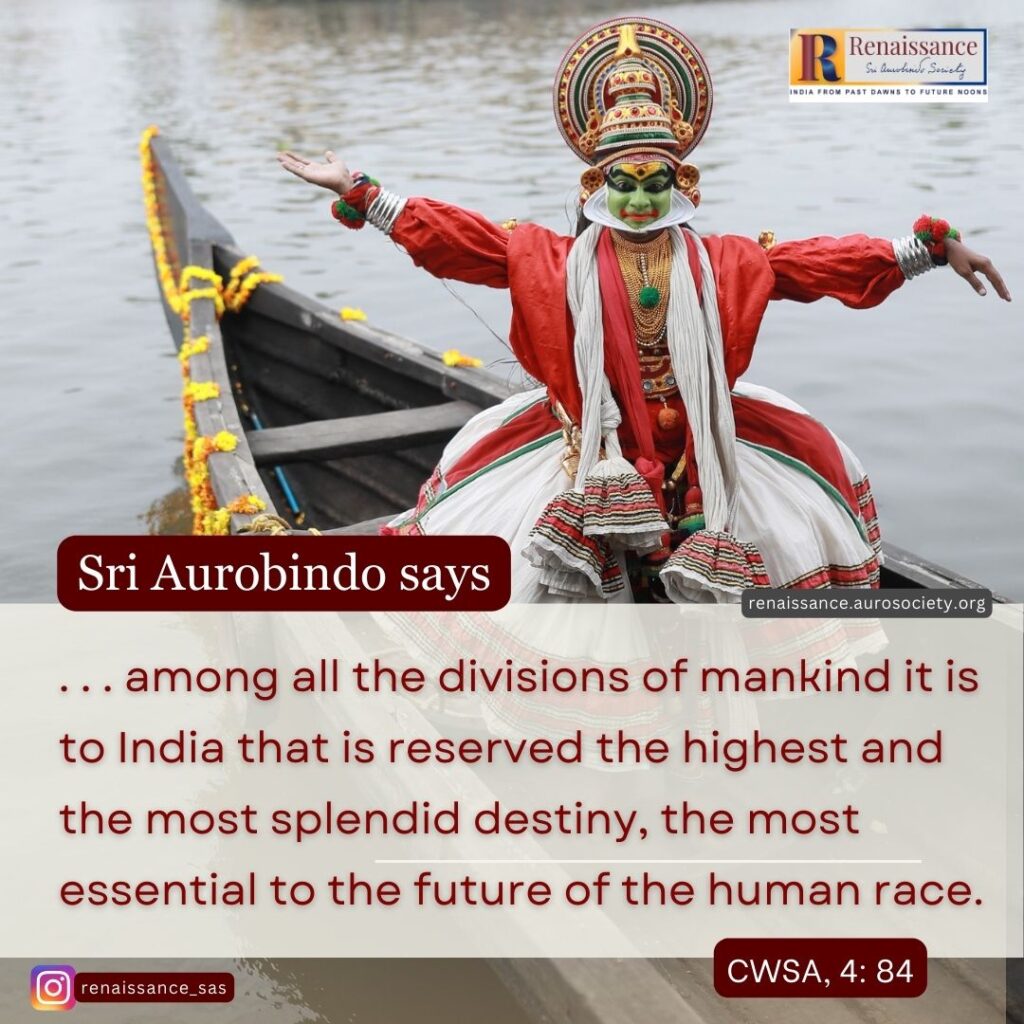
India’s Work for Humanity
In Bhawani Mandir, Sri Aurobindo clearly spells out the work India must do for the future of humanity; which is why the eternal spirit of India must be reborn in new forms. He writes:
India cannot perish, our race cannot become extinct, because among all the divisions of mankind it is to India that is reserved the highest and the most splendid destiny, the most essential to the future of the human race. It is she who must send forth from herself the future religion of the entire world, the Eternal religion which is to harmonise all religion, science and philosophies and make mankind one soul.
In the sphere of morality, likewise, it is her mission to purge barbarism (mlecchahood) out of humanity and to aryanise the world. In order to do this, she must first re-aryanise herself. [. . .]
~ CWSA, Vol. 4, p. 84
Are we willing and ready to rise up and work toward this goal? This requires immense and intense tapasya, a Yoga.
Our Current Issue
In our ongoing series – Streams of Sadhana, we turn our attention to collective yoga this time – Yoga of the Indian Nation. While selecting the offerings for this issue, we are guided by the Mother’s words:
Sri Aurobindo always loved deeply his Motherland. But he wished her to be great, noble, pure and worthy of her big mission in the world. He refused to let her sink to the sordid and vulgar level of blind self-interests and ignorant prejudices.
~ CWM, Vol. 13, p. 123
For the Guiding Light feature, we have selected Sri Aurobindo’s writing dated 26 March 1910 in Karmayogin. It speaks perfectly of the deeper nationalism that is compatible with the eternal Indian spirit. What was true for the Indian freedom movement remains valid today, in the sense that similar level of tapasya, pursuit of wisdom and invocation of shakti is demanded for building a future India that is true to her inner genius.
Another feature titled The Indian Nation and Unity in Diversity presents selected passages from three writings of Sri Aurobindo, from Bande Mataram, Karmayogin and Dharma. It highlights some of his insights on the true nature of Indian nation towards which we must aspire and work. He shows that the idea of unity in diversity is inherent in the very nature of Indian idea of nation.
We also get important hints her on the Hindu spirit of Indian nationalism, a topic that is both timely and significant.
The feature titled Of Politics, Patriotism and Yoga includes passages from some of the conversations and letters of Sri Aurobindo and the Mother which bring to light why political work or politics as it is practiced today is not compatible with the path of Yoga. At the same time, as the Mother explains the sentiment of patriotism or love for one’s country has a place in Integral Yoga which is not cut off from life.
***

The Ideal Flag for India is a 2-part essay by Amal Kiran, originally published in Mother India, August 15, 1949. What makes the analysis presented here much more significant for the future destiny of India is that this was seen and approved by Sri Aurobindo.
It also makes it highly important in terms of deepening the ongoing discourse in India on the essence of Indian national identity, Indian nationalism and Indianness, and their outer expressions. In part 2 especially, Amal Kiran summarises the nature of Indian genius and describes the flag of India’s spiritual mission which symbolises the spirit of India.
As part of India’s intellectual decolonizing project, there is a great need today to explore the relevance for incorporating Sri Aurobindo’s vision and thought in academia and mainstream intellectual discourse. Sri Aurobindo’s vision can be just the right foundation for facilitating an original discourse. It is grounded in India’s ancient wisdom and highly relevant for future India and her mission for the world and humanity.
Sachidananda Mohanty in his article titled Sri Aurobindo and the Modern Academic World underlines for us some of the key ideas of Sri Aurobindo that could be taken forward for further treatment in academia, both present and future. He also addresses a fundamental question about the connection between development of the intellect and yogic consciousness.
M. S. Srinivasan in The Right Path for India: Secularism or Spirituality? argues that the secular ideology of the West which has made significant contribution toward progress in Western nations is not in alignment with the innate spirit and swadharma of India. He reminds us that by converting the great and unbroken spiritual heritage of our nation into a living force of inspiration for every activity of our individual and collective life, it will lead to a lasting regeneration of India.
How is Sri Aurobindo’s ideal of spiritual nationalism which invokes the highest ideals of Sanatana Dharma is different from a narrow and exclusive religious nationalism? How is this ideal significant today for India’s nation-building work? The 2-part article titled Sanatana Dharma and Indian Nationalism addresses these question especially in consideration of India’s destined work for the future of humanity and the world.
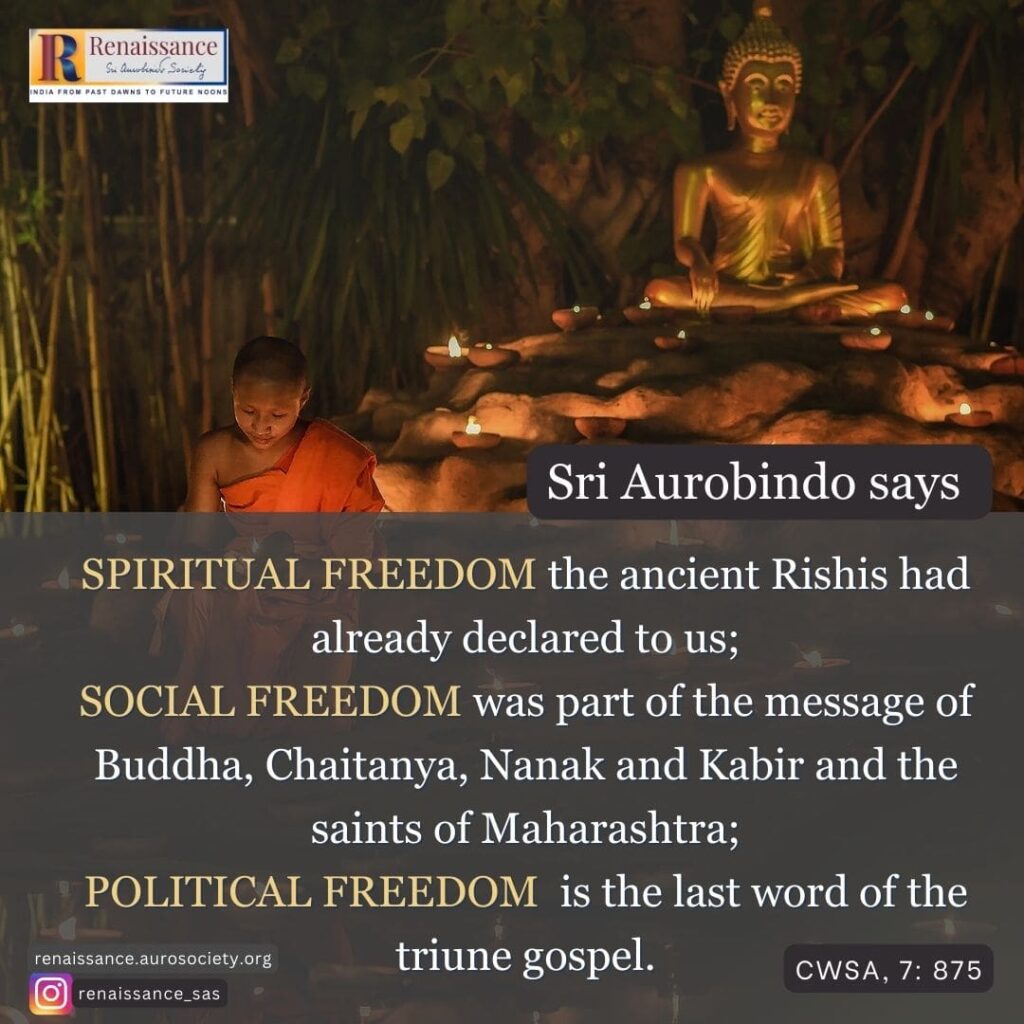
Charan Singh Kedarkhandi explores the deep significance of Sri Aurobindo’s remarkable essay titled On Original Thinking for today’s new India. He suggests that a clear and infallible roadmap to realize the dream of India as a thinking nation is laid down by Sri Aurobindo in this essay. (In my personal view, this particular essay should be a mandatory reading in all colleges and universities across India).
We feature excerpts from a long essay by Alok Pandey which was first published in August 2007 issue of Mother India. This special issue was dedicated to exploring some perceptions and perspectives on Sri Aurobindo’s message of August 15, 1947. In The Lines of our National Yoga, he argues that the third phase of the national yoga is about the emergence of the true Indian soul, free from traditions and customs, wide and spiritual in its outlook.
In a 2-part article titled The Soul of Indian Nation, Narendra Murty highlights what makes India’s nation-soul different from that of Europe. Using insights from Swami Vivekananda and Sri Aurobindo, he emphasizes that it is this essential temperament of Indian nation which gives her a unique mission for the world and humanity.
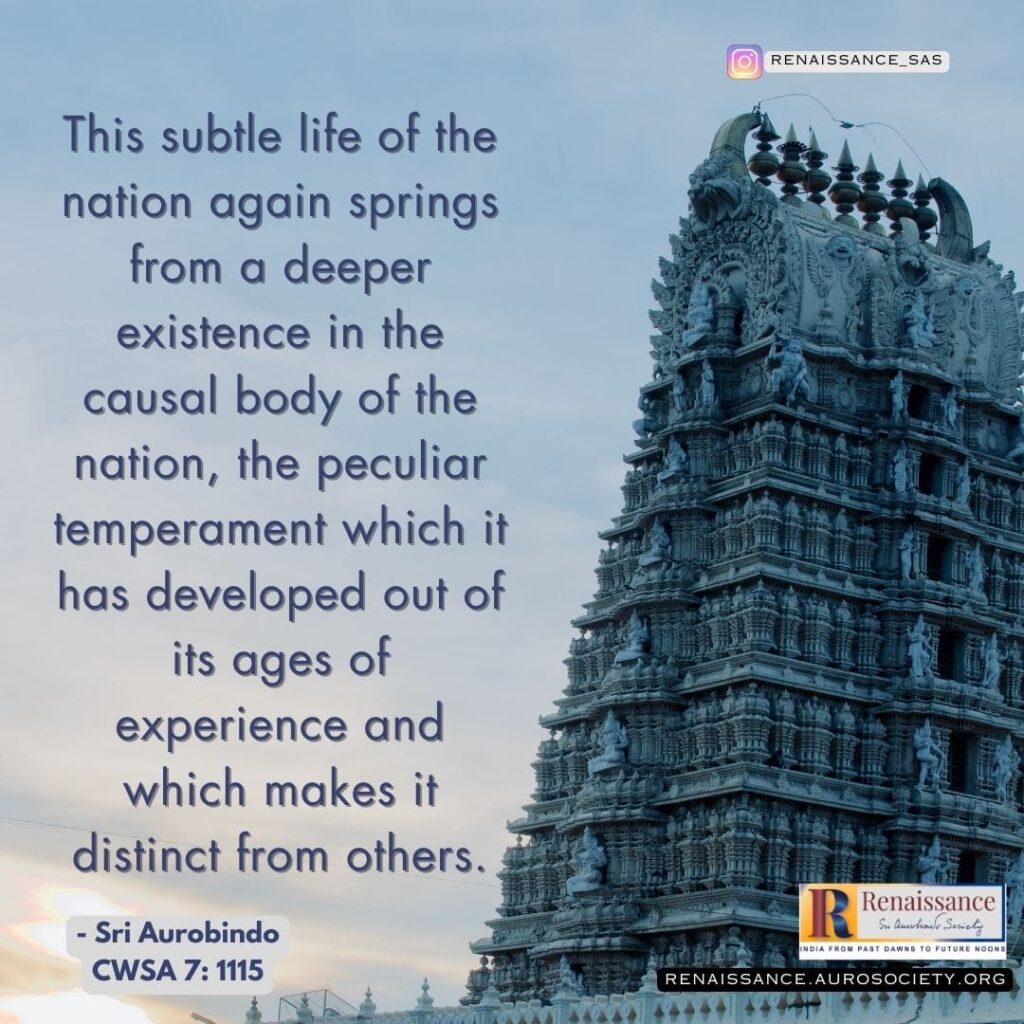
In our ongoing series The Upanishads Elucidated by Lopa Mukherjee we bring another interesting story this time. The title Swarāt Samrāt is enough to suggest that our storyteller is inviting us to ponder upon the concept and practice of self-mastery and self-conquest.
No Yoga, individual or collective can be done without complete faith and trust in the Higher Power or Supreme Being who is also hiding within as our Secret Self. The aspirant invokes the Divine Grace to accept his or her personal effort and aspiration. Without the Grace descending from above, no amount of personal effort at rejecting the countless imperfections within can help one make lasting progress.
This is true for the individual sadhana, and equally true for the national sadhana. The poem titled A Secret Self: Infinite O’ Delight by Kiran Sood reminds us of this truth.
As always, we offer this work at the lotus feet of Sri Aurobindo and the Mother.
In gratitude,
Beloo Mehra (for Renaissance Editorial Team)
Flip for a Quick Read:
National Symbols of India in the Light of Sri Aurobindo
~ Graphic Design: Beloo Mehra

